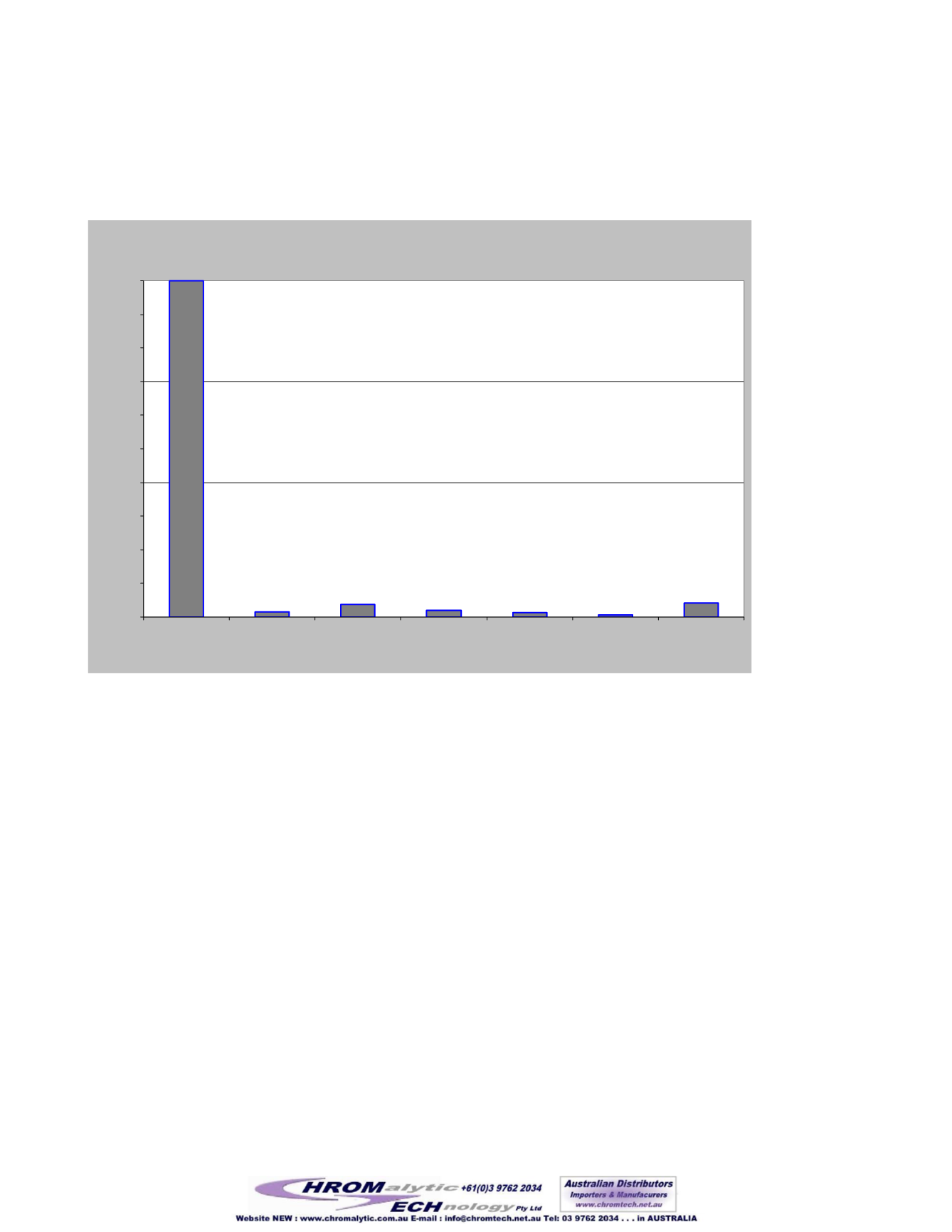
FormNo. 203-821-260 02/05-REV0
LECO is a registered trademark of LECO Corporation
7
Based on the results seen in Figure 6, it was concluded that documents could not be aged past
8months using SPMEGC-TOFMS and 2-phenoxyethanol concentrations. It was theorized that using
a less volatile component, one that might stay in the paper longer than 2-phenoxyethanol, could be
used to age ballpoint pen ink documents. Unfortunately, diphenylamine gave similar results to
2-phenoxyethanol (Figure 7). Although the results are not shown here, the ratio of less- tomore-
volatile compounds, as analyzed by SPMEGC-TOFMS, was no help in determining ballpoint pen ink
age either.
Diphenylamine remaining in an aged ink scribble
0
10
20
30
40
50
60
70
80
90
100
Feb-5-04
May-27-03
May-21-03
Apr-15-03
Feb-26-03
Feb-11-03
Dec-9-02
Date that ink was applied on paper sample
Diphenylamine (%)
All sampleswere analyzedFeb-19-04.
Figure7.
Diphenylamine disappearance from aged ink scribbles as determined by SPME and fast
GC-TOFMS. The SPME vial was heated to 70°C prior to sampling. Diphenylamine concentration
differences as determined by SPME GC-TOFMS are indistinguishable for 2003 and 2002 samples.
When heating the ink scribbles to 70°C for headspace sampling by SPME, most of the volatile
contribution is from the paper, and the chromatogram is quite complex. It becomes a challenge to
determinewhich compounds can be attributed to the ballpoint ink. To simplify the data processing
for these samples, a feature specific to ChromaTOF, "Compare", was used. This algorithm provides
a quick and fully automatedway to compare two samples on a GC peak-by-GC peak, mass
spectrum-by-mass spectrum basis. As an example in this work, a Referencewas created using
blank paper (that with no ink line on it) from the February 5, 2004 sample, and then Comparewas
used to analyze the same sample paper that contained ink lines.


